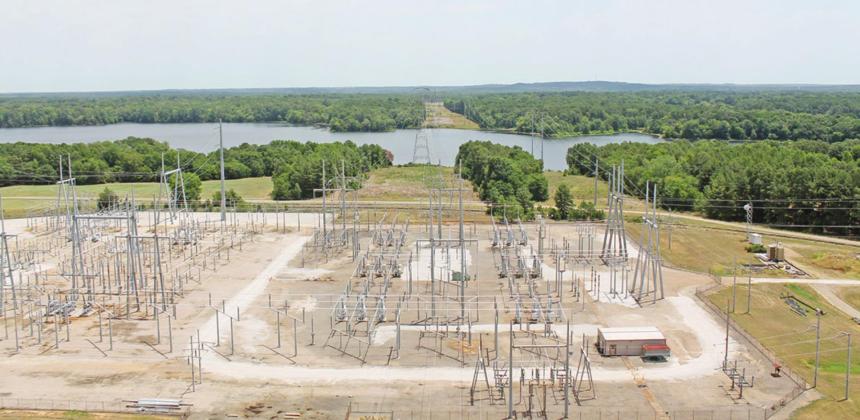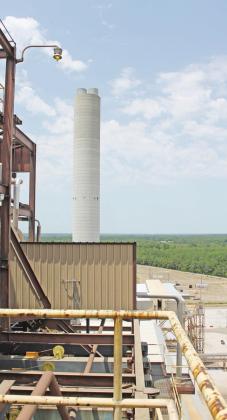The Welsh Power Plant celebrated their 45th Anniversary on July 19. Dedicated on July 29, 1977 after less than four years of construction, it was the first plant in the SWEPCO network’s history to be run on coal instead of natural gas, the first shipments of coal being delivered from Wyoming in 1976.
The Welsh Power Plant was named for John Robert Welsh, former SWEPCO President and Chairman of the Board. Joining SWEPCO in 1940 as a superintendent of power, he was elected to the position of president of the company 14 years later, retiring in 1971.
Monty McMahan, spoke to the several workers in the plant, thanking them for their hard work and congratulating them on their superb performance over the many years they have been a part of the plant’s operation.
Becky Vaughn is the plant’s longest-time employee, starting her career at Welsh on February 2, 1979.
Plant Manager Donnie Duffee said that they are proud to have been here for 45 years. Welsh has provided an income for their employees, and electricity at lower costs for many years, and have done it safely, he said.
“We affect a lot of lives here,” Duffee continued, “and have a major economic impact to the community.”
Originally composed of three units, the plant was roughly 10 years in the building, from 1972 through 1982. The second unit was retired in April 2016, as a part of a major retrofitting project to comply with the Environmental Protection Agency’s Mercury and Air Toxics Standards (MATS).
About 15,000 tons of coal per train are delivered to the Welsh Power Plant, which burns roughly 1.5 trainloads of coal per week, each train consisting of 125 cars.
In 2020, the employees of the Welsh Power Plant celebrated their two millionth car of coal unloaded since their opening, but because Covid was in full swing, it was difficult to properly celebrate the event. The achievement of 45 years in business has been their first big gathering since Covid and it was enjoyed in proper style with steak, potatoes, and cake.
In the computer room which keeps a digital eye on the various—hot and cold, large and small, intricate and simple—machines and devices within the plant, is the operation’s brain. There is a chain of command that extends to Columbus, Ohio, and then to Little Rock, Arkansas, so that decisions can be made accurately. But all mechanical systems can be overridden at the Welsh Power Plant, giving them ultimate control over any immediate situation.
The load of electricity always equals demand, so that should a machine need repairs, the load may be carried by the other generator. This keeps customers from experiencing brownouts or blackouts in their homes and businesses.
The producing of electricity is an extremely complex operation. Huge pulverizers grind the coal into a fine powder—about the consistency of face powder—in order for a hotter, more consistent burn. The furnace has a capacity of creating 3,793,000 pounds of steam per hour, at 2,620 pounds per square inch pressure, at 1,000 degrees Fahrenheit. This steam is used to run the turbines, which in turn drive the generators. This steam is cooled with condensers which take water from the Welsh Reservoir at 564,000 gallons per minute. The generators are kept at a constant 3,600 rpm, night and day, generating power at 18,000 volts. These volts are then transmitted via high voltage transmission lines at 345,000 volts to the various distribution substations located in a 25,000 square mile area in East Texas, western Arkansas, and northwest Louisiana. Some of the cities that are serviced include Mount Pleasant, Longview, Fayetteville, Texarkana, Shreveport, and Bossier City.
The 1,350 acre Welsh Reservoir acts as the cooling system for the plant. A specially designed waterfall and cooling towers help to cool the water used in the plant before it is discharged back into the lake.



